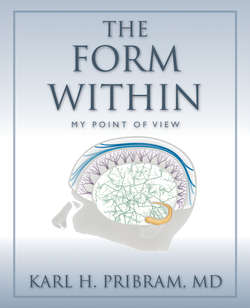Читать книгу The Form Within - Karl H Pribram - Страница 78
На сайте Литреса книга снята с продажи.
What We Believe We Know
ОглавлениеTo summarize: We navigate a world populated by objects. Objects maintain their form despite movements. What vary are images—that is, profiles of objects that change with movement. But even our perceptions of images depend on motion.
Minute oscillations of the relation between receptor and stimulus are necessary for any perceptual experience to occur. These oscillations describe paths around stable points—called “point attractors.” Point attractors are the result of transformations from the oscillations that describe the sensory input in the spectral domain, to space-time “pixels” from which images are composed.
When points become grouped by moving together with respect to other points, the group is perceived as a form—that is, an object. The properties of objects, the invariance of their perceived form over changes in their location and apparent size are described by a particular kind of group called a “symmetry group.”
A more encompassing picture of how we navigate our world can be obtained by considering a corollary of what I have described so far. Recall that, in introducing his suggestion to Helmholtz that he use groups, Poincaré noted that “objects are relations.” Thus, Poincaré’s groups describe relations among points, among pixels within a frame, a context that occurs in space and time.
Such contexts are bounded by horizons, the topic of the next chapter.
